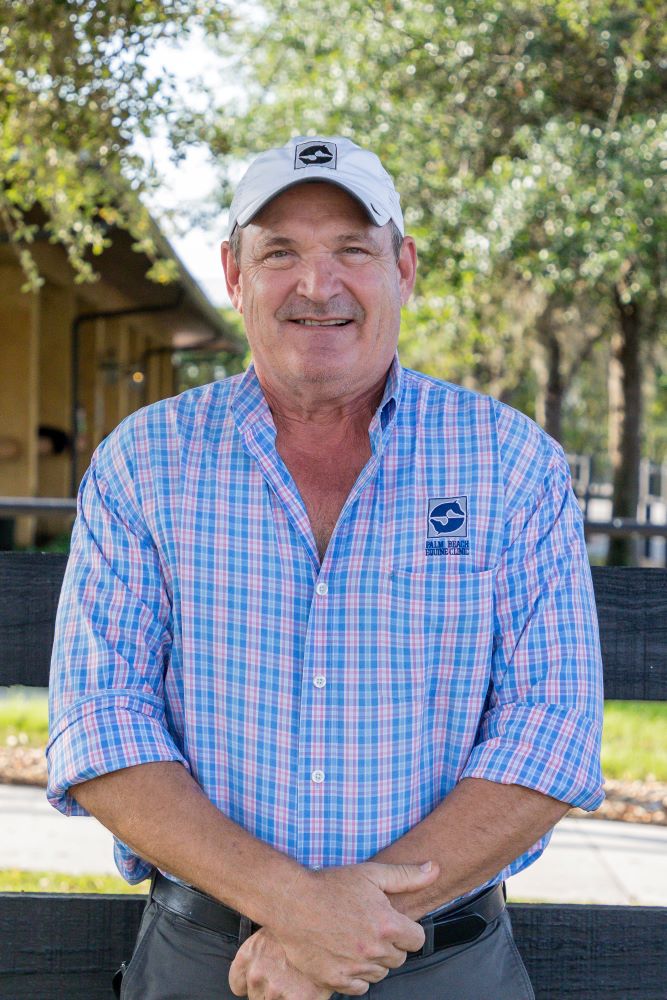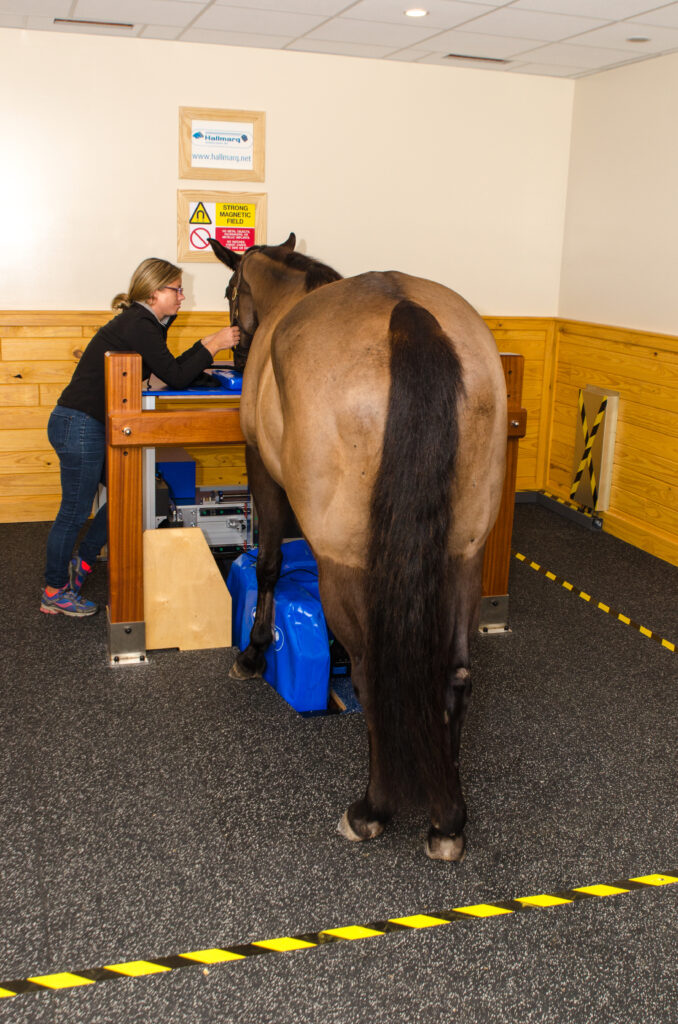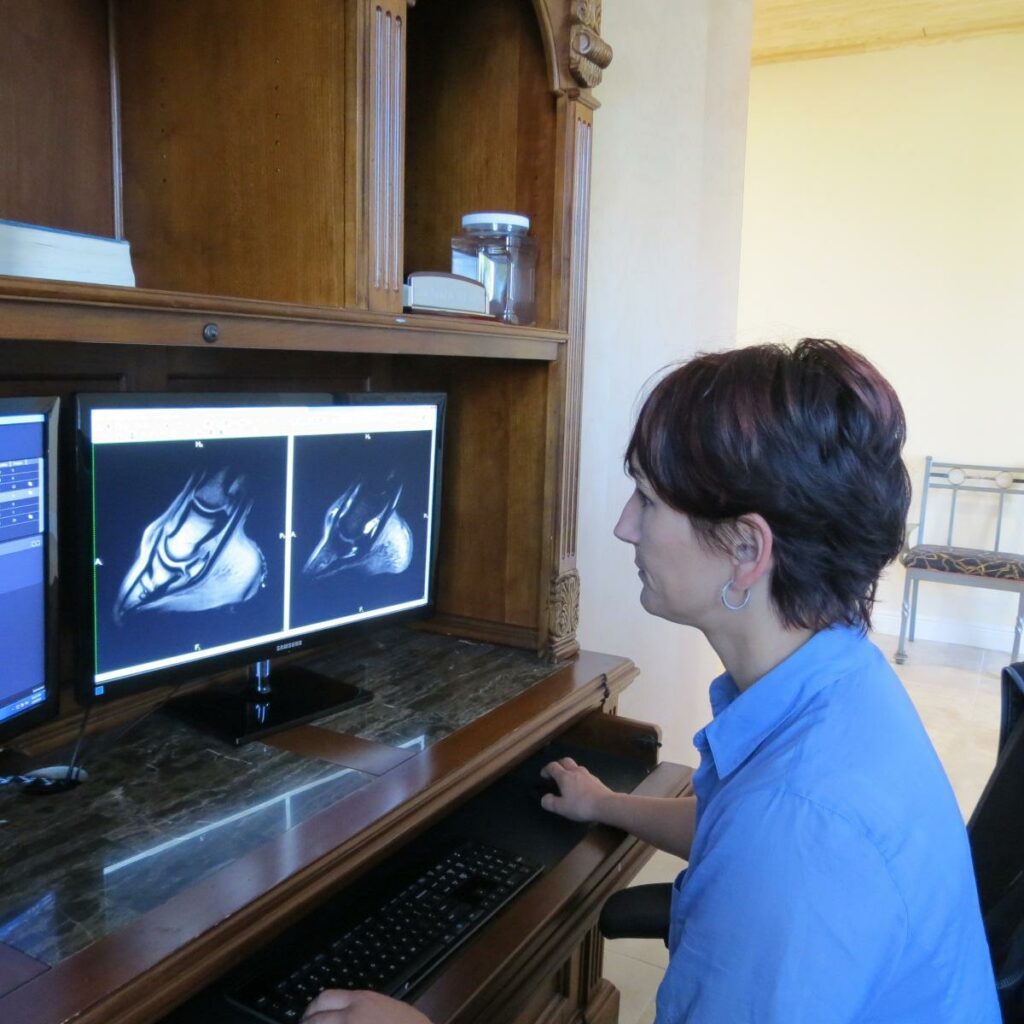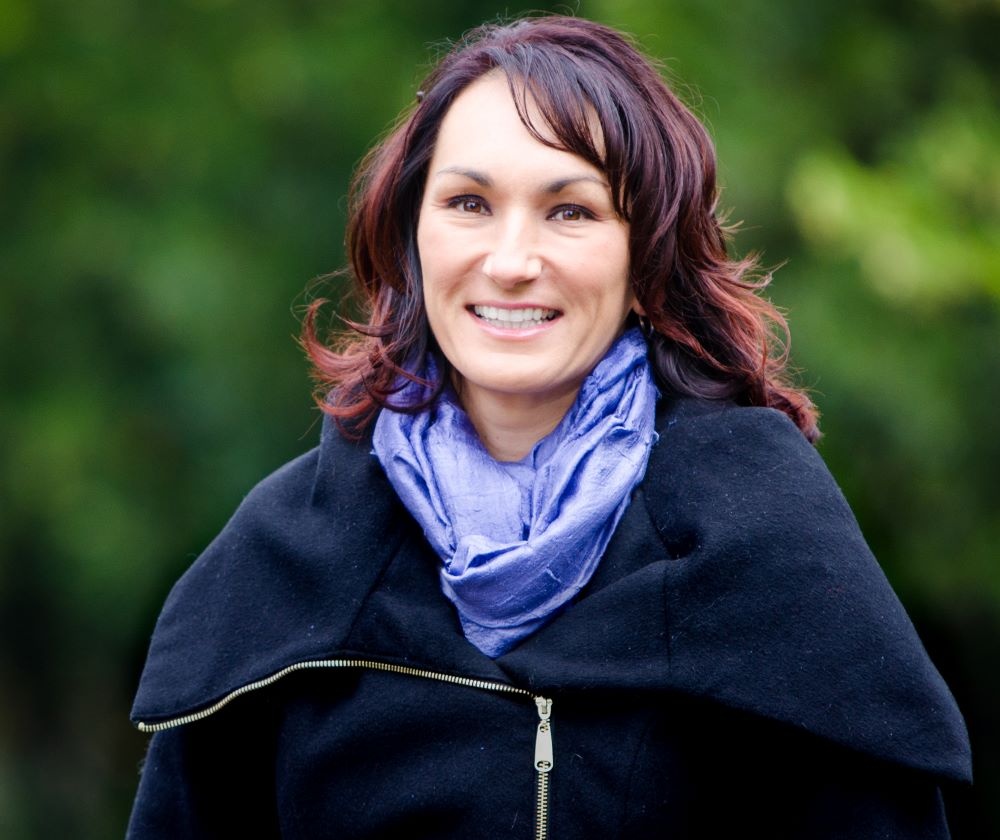Year: 2017
Several regions across the U.S. have reached the peak of the winter show season, and with the increase in equine travel, as well as large populations of horses in close contact with one another, proper vaccination protocols are as important as ever.
Dr. Kathleen Timmins of Palm Beach Equine Clinic in Wellington, FL, is often asked why proper equine vaccination protocols are imperative for all horses, and her answer voices directly to the welfare of the horse.
“You could save your horse’s life!” she said. “It is really important from an infectious disease standpoint, but also for mosquito-borne diseases or rabies; these are diseases that are life-threatening for lack of a $25 vaccine.”
Vaccinations: When, What, and How
According to Dr. Timmins, recommended vaccination protocols vary by vaccine and by the location of the horse, but the core group of vaccines is relatively standardized. As a rule, horses should receive vaccines to prevent mosquito-borne diseases like Eastern Equine Encephalitis (EEE), Western Equine Encephalitis (WEE), and West Nile Virus twice a year. Equine Encephalitis is characterized by the swelling of the brain in an infected horse, while West Nile Virus infects the central nervous system and may cause signs of Encephalitis, including those ranging from fever to weakness and paralysis of the hind limbs.
“Vaccinations against mosquito-borne diseases become very important in south Florida because we have mosquitoes year-round,” said Dr. Timmins. “As you go further north, owners may sometimes choose to only vaccinate against those once a year.”
Included in the twice-a-year vaccination program is a Flu/Rhino dose. Flu vaccination prevents the illness in horses much the same way it does in humans, while the Rhino vaccine is key in helping to prevent the Equine Herpesvirus (Rhinopneumonitis). Equine herpesvirus type 1 (EHV-1) and Equine herpesvirus type 4 (EHV-4) most commonly result in respiratory disease in horses and can progress to neurological disease.
East and West Equine Encephalitis, West Nile, and Flu/Rhino can all be administered as a combination vaccine requiring only one injection.
In addition to vaccinations given twice a year, annual vaccinations include those to prevent Potomac horse fever, a potentially fatal illness that affects the digestive system and is caused by the intracellular bacterium Neorickettsia risticii; Strangles, a bacterial infection of the upper respiratory tract; and Tetanus, an acute, often fatal disease caused by the bacteria Clostridium tetani found in soil.
Much like the vaccinations administered to humans, the companies that produce the vaccines are in constant transition, adapting each vaccine to the most common strains to ensure the most accurate prevention of disease.
The Role of the Horse Show

To combat the rise of infectious disease outbreaks, many horse show organizers have taken a proactive step to reduce the spread of disease by developing vaccination requirements for the show grounds. This is a step towards preventing disease as an organized community, according to Dr. Timmins.
“No one wants sick horses,” she said. “All horse show organizers can do is put the requirements out there and hope that people comply and that they understand why vaccinations are so important.
“When a horse pops with a fever at a show everyone is alarmed,” continued Dr. Timmins. “If proper vaccination protocols are followed, it is easier for us to figure out why that horse has a fever and treat them quickly and appropriately.”
Negative Reactions
There are occasional cases of horses reacting negatively to certain vaccinations, making a regular schedule difficult. After receiving a vaccine intramuscularly, some horses experience local muscular swelling and soreness or signs including fever, anorexia, and lethargy. Severe reactions such as anaphylaxis can also occur in rare, extreme cases.
According to Dr. Timmins, there are procedures in place to help keep horses that suffer reactions on a systematic vaccination plan without threatening their health or competition schedules.
“What I will do first is break up the vaccinations so we can figure out which one is bothering the horse,” said Dr. Timmins. “Then sometimes all it takes is a change in the vaccine company because the particular horse is reacting to their preservative or their carrier. Veterinarians can also pretreat with a nonsteroidal anti-inflammatory drug to avoid really bad reactions. Finally, there is always an option to administer intranasal vaccines rather than using an injectable.
“Very few horses have severe reactions to vaccines and for the most part, the horses traveling to shows are part of a young and healthy populations,” continued Dr. Timmins.
As the winter horse show season continues throughout the U.S., horse health must be a priority and vaccinations are a simple way for the equine community to do their part.
“Vaccinations are an easy and relatively inexpensive way to prevent infectious disease outbreaks, and keep our horses healthy and safe,” she said. “There’s just no reason not to vaccinate.”
More About Dr. Timmins

Dr. Kathleen A. Timmins is a 1993 graduate of the Ohio State University School of Veterinary Medicine. She completed her internship in equine medicine and surgery at the Illinois Equine Hospital near Chicago. Prior to coming to Florida, Dr. Timmins practiced in Aiken, South Carolina, where she met her husband, John, who plays polo professionally. Growing up in Central Ohio, Dr. Timmins began her relationship with horses as a child on the hunter/jumper circuit. She continues to ride and show as much as possible. She and her husband are enjoying parenthood with their daughter Schuyler.
Palm Beach Equine Clinic provides experience, knowledge, availability, and the very best care for its clients. Make Palm Beach Equine Clinic a part of your team by calling 561-793-1599.

Palm Beach Equine Clinic of Wellington, FL, has a team of over 30 skilled veterinarians, including three Board-Certified Surgeons, one of the world’s only Board-Certified equine Radiologists, and numerous other experts in their fields. Palm Beach Equine Clinic’s surgical team leader, Dr. Robert Brusie, is a nationally renowned Board-Certified surgeon whose surgical specialties include orthopedic, arthroscopic, and emergency cases. Dr. Brusie has been the head surgeon with Palm Beach Equine Clinic for the past 20 years and is a beloved part of the team.
Dr. Brusie graduated from Michigan State University College of Veterinary Medicine. He completed his surgical residency at the Marion DuPont Scott Equine Center in 1989 and has been in private practice ever since. He became a Diplomate of the American College of Veterinary Surgeons in 1994. Dr. Brusie joined Palm Beach Equine Clinic in 1996.
Dr. Brusie is a Board-Certified Surgeon who is recognized for his expertise in colic surgery, as well as for his skill in arthroscopic surgery. His surgical experience expands the clinic’s progressive care in both emergency and elective procedures. He has published articles on numerous topics, including the equine intestinal tract and septic arthritis in horses. Dr. Brusie is married and has three daughters.
What was your background with horses growing up?
I grew up on a farm in Michigan. We had usually between 200-600 head of cattle and always between four to six horses. Our horses were cow ponies or driving horses. My dad loved horses and had to have them around. My family has owned our farm for six generations – it pretty much occupied all of our time besides sports and school. Needless to say, we didn’t have much time to show horses.
When and why did you decide to become a veterinarian? Did you know you wanted to be a surgeon from the start?
I decided to become a veterinarian at an early age. I think I was seven or eight years old when I pulled my first calf. One of my dad’s hired men called me ‘doc’ when I was about that age. When I went to college, my plan was to become a large animal veterinarian and live in my hometown and continue to farm part-time with my three brothers. All of that changed when I was in Veterinary school at Michigan State University. Dr. Ed Scott was one of the five surgeons at MSU. He was a gifted surgeon and a great teacher. He kind of steered me into an equine internship at Auburn University. It was one of those things that the more you did, the more you wanted to do to improve yourself. I operated my first colic by myself when I was three weeks out of vet school (32 years ago).
How did you first start working at Palm Beach Equine Clinic?

I was a surgeon at a clinic in Atlanta. In 1996 I had performed surgery for a client of Dr. Paul Wollenman’s. He had started this practice in 1975. He asked me if I needed a job. I was planning on staying in Atlanta for the rest of my career. I received phone calls from the other two partners over the next nine months, and eventually with encouragement from my fiancé, now wife Melissa, I took the job.
What do you love most about working at Palm Beach Equine Clinic?
We have an exceptional group of veterinarians and staff here. The depth and scope of our veterinarians is amazing due to the large caseload. On any individual case, there may be two to three doctors that have input on the case to ensure no stone is left unturned.
Additionally, we are so privileged to work on some of the best show, race, and polo horses in the world. It is truly an honor.
What sets the surgical services at Palm Beach Equine Clinic apart?
Between Drs. Gomez, Davis, and myself, we perform just about every soft tissue and orthopedic surgeries that are done in our field.
Personally, my greatest sense of success is when I see a horse back after surgery going as good or better than it was prior to surgery.
What are the biggest changes you have seen in sport horse medicine over the years?
Currently, the most exciting thing we see going on in medicine is regenerative therapy. Twelve to 15 years ago, we were harvesting bone marrow from the sternum and injecting it into lesions in tendons and ligaments. Now we manipulate the bone marrow or other sources of stem cells to promote more rapid and more functional healing of some of these injuries. I can assure you that in 10-20 years what we are doing now will seem stone-aged by then. There are some very clever minds performing some serious research in this field.
How do you stay up-to-date on new medical advances?
Every veterinarian at Palm Beach Equine Clinic tries to attend as many meetings as time allows. We also do a weekly journal club at our clinic to discuss recently published papers in veterinary and human medicine and surgery.
What is the most interesting or challenging surgery that you have done?
Dr. Gomez and I had a three-year-old racehorse that had split his P1 (long pastern bone) and cannon bone in the same leg in a race. We were able to piece together both bones perfectly and the horse recovered brilliantly. He probably could have returned to racing, however, the owners elected to retire him to life as a breeding sire.

How do you spend your free time when you are not working?
When I’m not doing something with my family, I really enjoy woodworking. My current project is building a kitchen table for Sarah, my assistant of 12 years. In the summer, I get roped into helping on my brother’s farm.
What is something interesting that people may not know about you?
I have three daughters who I am very proud of and tend to brag on maybe a little too much. My oldest, who was a nationally ranked swimmer, is now an anesthesiologist in human medicine. My middle one is either number four or five (depending on the week) in the nation in debate, and my youngest will probably run the free world (you will have to ask her if she wants to).
How else is the family involved in horses?
My wife (Melissa) and youngest daughter (Kayla) are horse nuts in the true sense of the word. Anything to do with horses (especially show hunters) they are dialed in. Melissa loves riding, and Kayla shows in hunters and equitation.
What makes Palm Beach Equine Clinic a special place for you?
I am blessed to have three good men as business partners. They are my good friends and great people. We are very lucky to have 20-plus veterinarians working with us who are very knowledgeable and caring individuals. We feel like a little practice, but with a lot of people who just get the job done.
Palm Beach Equine Clinic provides experience, knowledge, availability, and the very best care for its clients. Make Palm Beach Equine Clinic a part of your team!
Palm Beach Equine Clinic in Wellington, FL, has state-of-the-art surgical and advanced diagnostic imaging equipment available. With board-certified Radiologist Dr. Sarah Puchalski, Palm Beach Equine Clinic uses the Equine Standing Magnetic Resonance Imaging (MRI) and a Nuclear Scintigraphy (bone scan) camera to quickly and accurately diagnose injuries for their clients.
Every horse owner dreads seeing signs of lameness or discomfort in any horse, whether it is a backyard companion or a top-caliber sport horse. For performance horses, however, one of the first questions many owners ask upon contacting a veterinarian about a problem is, ‘Can the horse safely and comfortably return to work?’ Using Palm Beach Equine Clinic’s cutting-edge technology, Dr. Puchalski can quickly and accurately answer that question.

The Equine Standing MRI produces highly detailed images in several different planes to capture a complete image of a desired area. An MRI is best used to further define a specific area of both bony or soft tissue that has been pinpointed as the origin of lameness. The process can be completed while the horse is in a standing position and requires only light sedation.
Similarly, the process of Nuclear Scintigraphy (bone scan) begins with the injection of a radioactive isotope, specifically named Technetium 99. The isotope attaches to the phosphorous proteins localized within the bone and is absorbed over a few hours’ time. A specialized nuclear isotope gamma ray camera is used to capture images of the skeletal anatomy with a 360-degree view. Points of interest “light up” on the image to indicate increased metabolic activity and the site of injury.
Lameness or performance problems are most frequently approached through routine x-rays and ultrasounds, which can appear normal. Thus, it is difficult to diagnose subtle problems because the most common tools are not sensitive enough to diagnose in every case. At PBEC, the Equine Standing MRI and Nuclear Scintigraphy equip veterinarians with an advantage when troubleshooting a lameness issue and helps them to determine a correct, quick diagnosis.
Coupled with advanced technology, Palm Beach Equine Clinic is also one of very few equine practices in the U.S. with a Board Certified Radiologist on staff, and thanks to Dr. Puchalski, hundreds of MRI and bone scans are read each year at Palm Beach Eqine Clinic. In addition to state-of-the art diagnostic tools, the technology also affords economic benefits to owners.
“MRIs can give a definitive diagnosis, and that saves time and money in the long run,” said Dr. Puchalski. “For example, if a horse goes lame and is examined and treated empirically, which is a diagnosis based on likely problems through common diagnostic procedures, it either stays sound or it becomes lame again or even non-functional in three to six months. This method sets back the commencement of the appropriate therapy.

“What the MRI does is allow the horse to be treated early and correctly,” continued Dr. Puchalski. “Otherwise, you may not be treating the correct issue, and the horse could end up lame again very soon.”
Nuclear Scintigraphy does not produce a scan that is as specific, but it gives Dr. Puchalski the opportunity to procure a concrete quick diagnosis, as well as evaluate the whole horse for secondary problems.
“Oftentimes the primary problem in one place is making a horse sore in other places,” she said. “Owners like to know the root problem, but to also quickly diagnose secondary problems so the entire horse can be treated at once.”
As the official veterinary hospital of the Winter Equestrian Festival (WEF) and the Adequan® Global Dressage Festival (AGDF), Palm Beach Equine Clinic sees a high concentration of sport horses in need of care. In turn, owners of those horses are eager to see their horses quickly and happily return to competition.
“The biggest benefit to Palm Beach Equine Clinic and the Wellington community as a result of these MRI and Nuclear Scintigraphy scans is accessibility,” concluded Puchalski. “Anyone can call from the horse show to the clinic, get a scan scheduled quickly- in and out, get results fast, and then their training program can be changed immediately.”
About Dr. Sarah Puchalski
Dr. Sarah Puchalski is from Davis, CA, where she was an associate professor at the University of California in their Department of Surgical and Radiological Sciences. In 1995, she received her BS in biology from Simon Fraser University in British Columbia, and in 1999 earned her Doctor of Veterinary Medicine from the University of Saskatchewan in Saskatoon, where she received the ACVS Outstanding Large Animal Surgery Student award that same year. Dr. Puchalski interned in Field Service and Sports Medicine at New Bolton Center at the University of Pennsylvania in 2001, and completed her residency in radiology at UC Davis in 2005.
Dr. Puchalski has devoted her career to teaching and improving equine health through the development and refinement of diagnostic techniques. In 2011, she contributed to two books on the topic of equine lameness. Her recent contributions include chapters in “Diagnosis and Management of Lameness in the Horse,” edited by Ross and Dyson, as well as in “Veterinary Computed Tomography and the Clinical Veterinary Advisor: The Horse, Equine Colic and Veterinary Clinics of North America.” She also has contributed close to 50 scientific articles concerning the diagnosis of equine lameness to many periodic journals, including Veterinary Radiology & Ultrasound: the official journal of the American College of Veterinary Radiology and the International Veterinary Radiology Association; Veterinary Pathology; Equine Veterinary Journal; the American Journal of Veterinary Research; Equine Veterinary Education; Journal of the American Veterinary Medical Association; and Journal of Veterinary Internal Medicine.
Palm Beach Equine Clinic provides experience, knowledge, availability, and the very best care for its clients. Make Palm Beach Equine Clinic a part of your team!
Palm Beach Equine Clinic is proud to serve as the local headquarters for emergency services and equine diagnostics during the winter show season in Wellington, FL. As the official veterinary hospital of the Winter Equestrian Festival (WEF) and the Adequan® Global Dressage Festival (AGDF), Palm Beach Equine Clinic has been the premier surgical facility in Wellington for over three decades.
While competing in South Florida, horses and riders from around the globe have access to Palm Beach Equine Clinic’s state-of-the-art hospital for all of their sport horse needs. Palm Beach Equine Clinic has a team of over 30 veterinarians, which includes three Board-Certified Surgeons, a Board-Certified equine Radiologist, and numerous other experts in their fields. All competitors and their traveling veterinarians are welcome for the support of services and collaboration throughout the season.
Referral Veterinarians Welcome
The referring relationship between veterinarians is most commonly seen in the specialty departments of surgery, internal medicine, ophthalmology, and advanced diagnostic imaging. At Palm Beach Equine Clinic, the advanced diagnostic imaging and surgical technology is unmatched, and the three Board-Certified Surgeons are skilled in many procedures that require high levels of expertise and advanced current equipment. As a result, many veterinarians refer their clients to the facility for specialty services.
Dr. Weston Davis, one of the Board-Certified Surgeons on the staff at Palm Beach Equine Clinic, works with many referral cases. Throughout the year, veterinarians from all over Florida frequently refer their clients to Palm Beach Equine Clinic for surgical procedures and advanced diagnostic imaging. The referring veterinarians may range anywhere from general practitioners to other surgeons that do not have access to surgical facilities or the most modern diagnostic imaging modalities while on the road.
“As a rule, we are friendly with referring doctors and take care of their clients with as much high-level care and professionalism as possible,” Dr. Davis stated. “It is important to us to maintain good relationships with the veterinarians that refer to us for specialty work. We always try to facilitate whatever level of involvement they desire. If they want to come and be there for the surgical procedure, we make that happen, and if they just want to send the case and not be as involved, we can do that as well. However, we also always collaborate with the referring veterinarian and the client as a team. If they send a horse in for a surgical procedure, we are going to do the procedure and then connect the client with the referring physician for the follow-up.”

Talented Surgeons and Advanced Diagnostic Imaging
The cutting-edge services available at Palm Beach Equine Clinic are made possible by the expertise of the hospital’s talented surgeons, along with the assistance of state-of-the-art diagnostic imaging and comprehensive surgical and medical resources. The combination brings many of the best veterinarians in the world to Palm Beach Equine Clinic for assistance with their most complex cases.
Among the hospital’s features, the latest in surgical technology enables less invasive operations that result in faster recovery times for the horse. Dr. Davis explained how diagnostic imaging is used during surgery to help guide procedures and assure the best possible result.
“Magnetic Resonance Imaging (MRI) and other advanced diagnostic imaging modalities can often be used for three-dimensional mapping to help enhance the surgical technique,” he noted. “There are some fractures in particular where the surgeon can map out the exact configuration of the fracture off of the MRI scan. We are then able to place markers with the MRI to guide a more exact, refined surgery.
“Intra-operatively, x-rays are taken to view progress, particularly for fracture repairs,” Dr. Davis continued. “The digital radiographs allows us to view the fracture in two planes to ensure optimal screw placement and fracture repair. Ultrasound is also frequently used in surgery for some of the more delicate procedures, specifically with soft tissue.”
Other surgical procedures may be guided with Arthroscopy, which aids in visualization of a joint; Laparoscopy, which uses a camera inserted into the abdomen; or Endoscopy, which is used in upper airway procedures. With the most advanced diagnostic imaging technology onsite, Palm Beach Equine Clinic is the go-to hospital for equine owners and referral veterinarians from around the world during the winter season in Wellington.
Palm Beach Equine Clinic provides experience, knowledge, availability, and the very best care for its clients. Make Palm Beach Equine Clinic a part of your team! To find out more, please call 561-793-1599.



